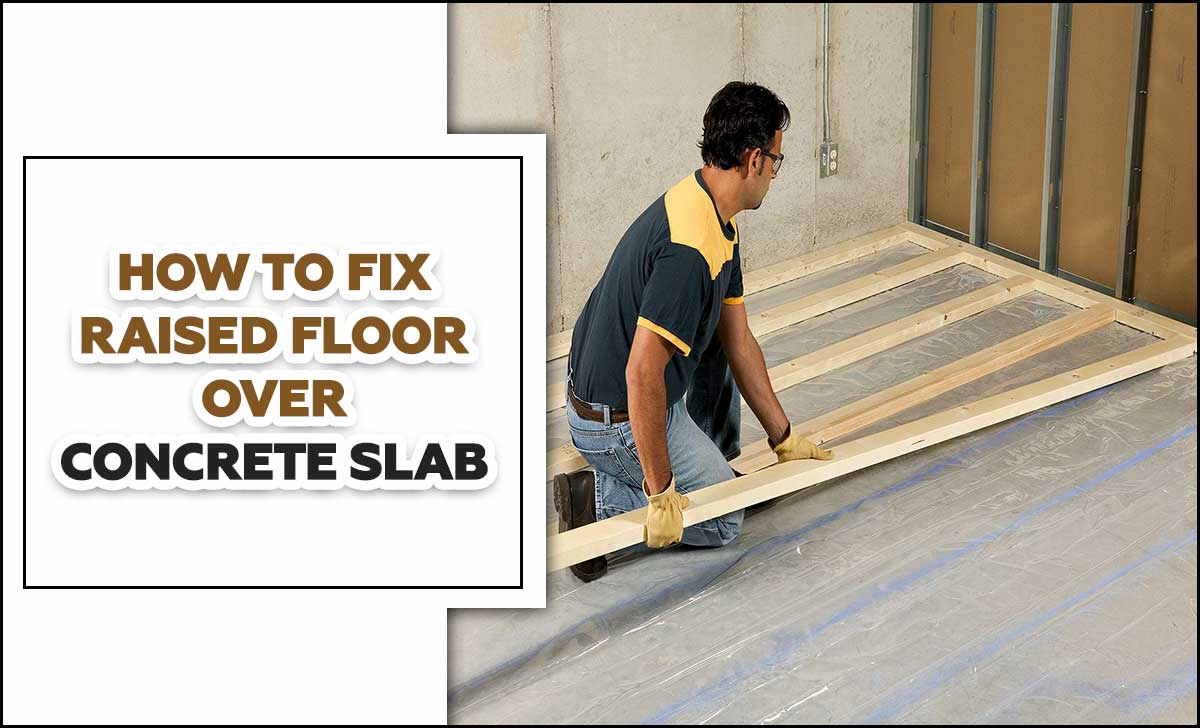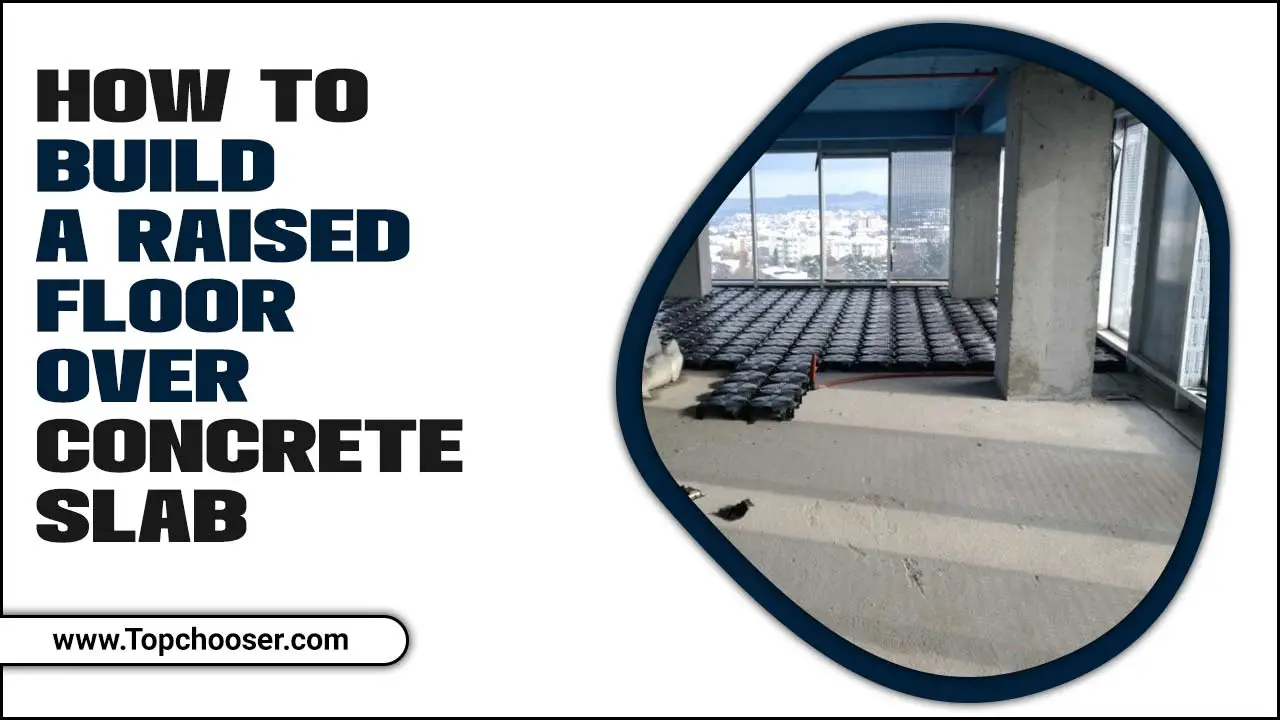Insulating a raised floor over a concrete slab may seem daunting, but it can be a manageable and cost-effective project with the right knowledge and tools. Whether you want to convert a garage or basement into a livable space or increase your home’s energy efficiency, insulating a raised floor is crucial.
The insulation layer enhances indoor comfort by maintaining consistent temperatures throughout the space. Moreover, it protects flooring materials from moisture-related damage, extending their lifespan. We will discuss how to insulate a raised floor over a concrete slab, the importance of insulating a raised floor over a concrete slab, and the equipment and materials required for proper insulation.
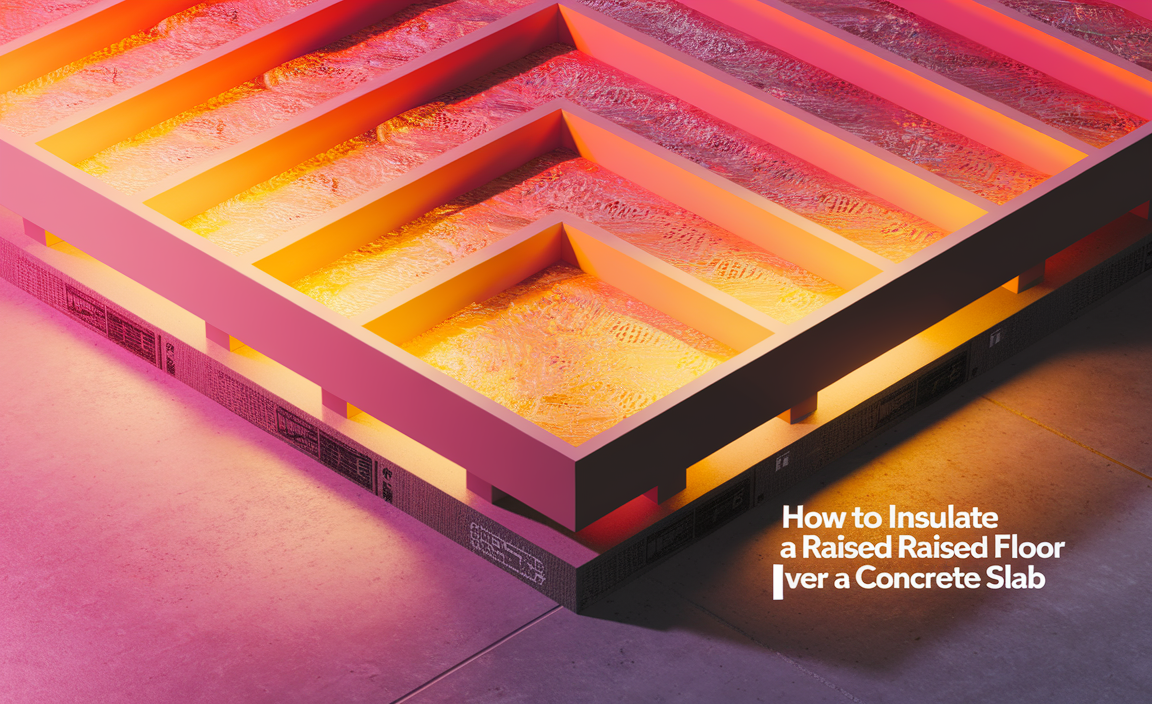
Necessary Equipment and Tools for Insulation
Several materials are necessary to ensure proper insulation and energy efficiency when insulating a raised floor. These necessary materials and tools can effectively insulate your raised floor assembly and improve energy efficiency in your space. Some of the key materials include:
- Insulation boards or batts
- Vapor barrier
- Sealants
- Fasteners
- Protective gear
How to insulate a raised floor over a concrete slab: 7 Easy Methods
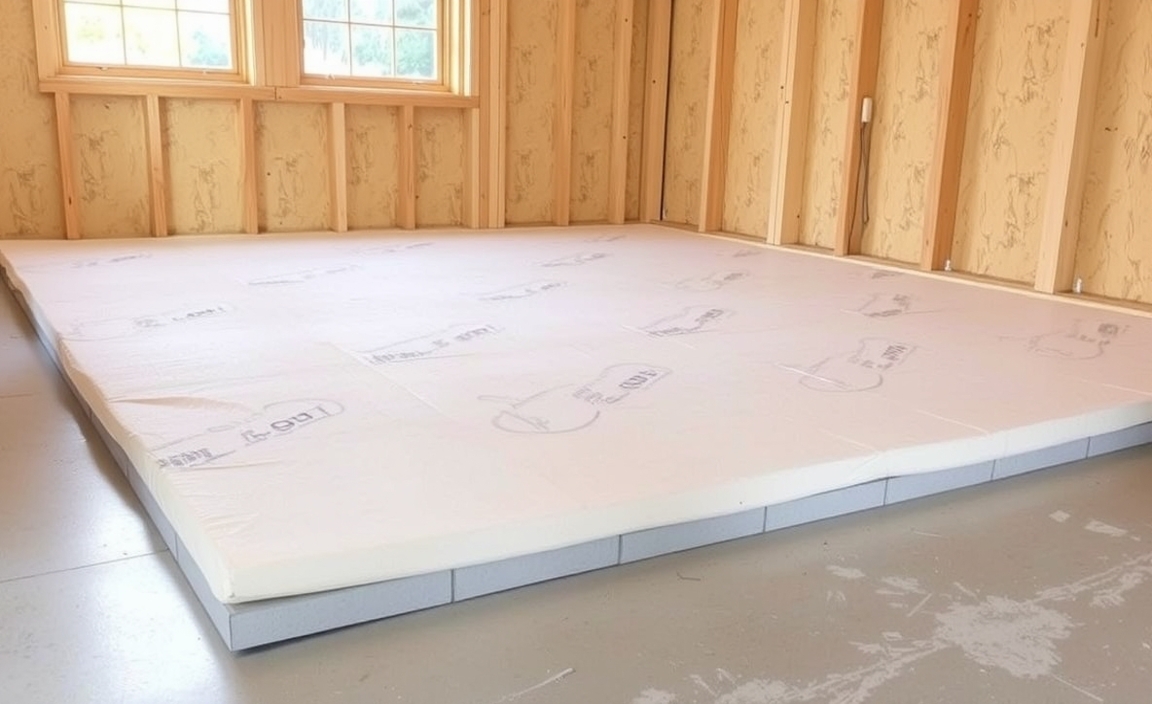
Insulating a raised floor is important in creating a comfortable and energy-efficient living space. By insulating the floor, you can prevent heat loss, reduce energy consumption, and improve the overall comfort of your home. Several options for insulating a raised floor include using rigid foam insulation boards or installing batt insulation between the joists. Following these methods, you can effectively insulate your raised floor over a concrete slab and enjoy a more comfortable and energy-efficient living space. Here are 7 easy methods to insulate a raised floor over a concrete slab.
1: Installing Foam Insulation
Installing foam insulation is an effective and budget-friendly method for insulating a raised floor over a concrete slab. One of the advantages of using foam insulation is its ability to provide excellent air sealing, reducing energy loss. This can help keep your home warm during the winter months and cool during the summer.
Additionally, foam insulation can be conveniently applied directly to the underside of the floor, filling in gaps and seams to create a continuous insulation layer. It is also resistant to moisture, preventing the growth of mould and mildew.
2: Adding a Subfloor Layer
Adding a subfloor layer is an effective method for insulating a raised floor over a concrete slab. This approach provides additional insulation and creates a smooth surface for the finished floor. Commonly used materials for the subfloor layer include plywood or OSB panels, which can be installed using screws or adhesives.
By placing insulation between the subfloor and the concrete slab, you can enhance the thermal bridging resistance of the raised floor. This method is especially beneficial for maintaining warmth, preventing dampness, and improving energy efficiency.
3: Using Radiant Barriers
Radiant barriers are an effective way to insulate a raised floor over a concrete slab. These barriers have specific designs to reflect heat, reducing heat transfer through radiation. Typically made of aluminum foil or reflective insulation materials, they can be easily installed on the underside of the floor joists.
Radiant barriers work best in hot climates with cooling-dominated seasons, enhancing energy efficiency when combined with other insulation methods. By incorporating radiant barriers into your insulation strategy, you can create a more comfortable and energy-efficient environment within your space.
4: Installing a Vapor Barrier
A vapor barrier is essential in insulating a raised floor over a concrete slab. The vapor barrier, typically made of polyethylene or plastic sheeting, prevents moisture from entering the living space. It should be installed between the concrete slab and the subfloor, with proper sealing of seams and edges for effective moisture control.
The vapor barrier helps protect against mold, mildew, and other moisture-related issues by preventing moisture infiltration. Incorporating a vapor barrier into the insulation process is crucial for maintaining a dry and comfortable environment within the space.
5: Adding Insulated Panels
Adding insulated panels is a quick and efficient way to insulate raised floors over a concrete slab. These pre-made panels have built-in insulation, providing thermal insulation and moisture resistance. They can be easily installed directly over the concrete slab, eliminating the need for additional layers of plywood or other materials.
Insulated panels are available in various materials and thicknesses, allowing you to choose the best option for your needs. With their ease of installation and excellent insulation properties, insulated panels offer a convenient solution for insulating raised floors.
6: Utilizing Reflective Insulation
One effective method for insulating a raised floor over a concrete slab is using reflective insulation. This type of insulation consists of a reflective surface and an air gap, which helps to reflect radiant heat and reduce heat transfer through conduction. You can easily install reflective insulation on the underside of the floor joists.
It is a lightweight, cost-effective solution that can be combined with other insulation methods to improve overall performance. By incorporating reflective insulation, you can enhance the energy efficiency of your raised floor while keeping it warm and comfortable.
7: Adding Rigid Insulation
Rigid insulation boards are an effective method for insulating a raised floor over a concrete slab. These boards offer high thermal resistance and can be installed directly on the concrete slab or between sleepers. Rigid insulation provides excellent moisture resistance and durability, making it a reliable option.
It can be easily cut to fit the required dimensions and secured using adhesive or mechanical fasteners. Additionally, rigid insulation is available in various materials, such as XPS or EPS foam, providing flexibility in choosing the best option for your needs.
Benefits of Insulation for Raised Floors

Insulation for raised floors offers numerous benefits. It reduces heat loss and energy consumption, making it an important factor in improving energy bill efficiency. Additionally, proper insulation helps control moisture, preventing the growth of mold and mildew. Insulated floors also enhance indoor air quality by minimizing drafts and allergens. Some benefits of Insulation for raised floors:
- Enhanced thermal performance, leading to reduced energy costs.
- Improved comfort by maintaining a consistent temperature in the living space.
- Minimized moisture intrusion and potential mold growth.
- Increased sound insulation, reducing noise transmission between floors
- Long-term durability and protection for the concrete slab and floor structure.
Safety Precautions Before Beginning the Insulation Process
Before beginning the insulation process for a raised floor over a concrete slab, it is important to take certain safety precautions. It is also advisable to carefully read and follow the manufacturer’s instructions to ensure safe and effective installation. These safety precautions ensure a smooth and secure insulation process for your raised floor. Here are some key points to keep in mind:
– Wear protective gear such as gloves, goggles, and a mask to protect yourself from any potential hazards.
– Make sure the work area is well-ventilated to prevent the buildup of fumes or dust.
– Turn off any electrical circuits that may be affected by the insulation process.
– Use caution when handling tools and materials to avoid injury.
– Follow all manufacturer instructions and guidelines for proper installation of the insulation.
Tips to Install Flooring After Insulating a Raised Floor
Installing flooring after insulating a raised floor over a concrete slab can help improve your space’s energy efficiency and comfort. Following these tips, you can effectively insulate a raised floor over a concrete slab and install flooring that enhances energy efficiency and comfort in your space. Here are some tips to help you with the installation process:
- Prepare the concrete slab: Before installing the insulation and flooring, make sure the concrete slab is clean, dry, and level. Remove any debris or moisture that may be present.
- Choose the right insulation: Select materials suitable for a raised floor system. Common options include rigid foam boards, spray foam insulation or fiberglass batts. Consider factors such as R-value, moisture resistance, and ease of installation when choosing your insulation.
- Install a vapor barrier: To prevent moisture from seeping into the insulation and damaging your flooring, it’s important to install a vapor barrier. This can be a plastic sheet or a specialized vapor barrier-proof membrane.
- Lay out the insulation: Cut the insulation panels to fit between the floor joists and lay them out evenly across the entire floor-raised floor area. Ensure there are no gaps or overlaps between the panels.
- Secure the insulation: Use adhesive or mechanical fasteners to secure the insulation panels. Follow manufacturer instructions for proper installation techniques.
- Install flooring material: Once the insulation is securely in place, install your chosen material. Depending on your preferences and needs, this could be hardwood, laminate, tile, or carpeting.
- Follow manufacturer guidelines: Always refer to the manufacturer’s guidelines for proper installation techniques for your chosen flooring material. This will ensure a successful and long-lasting result.
What Are the Different Concrete Insulation Options Available?
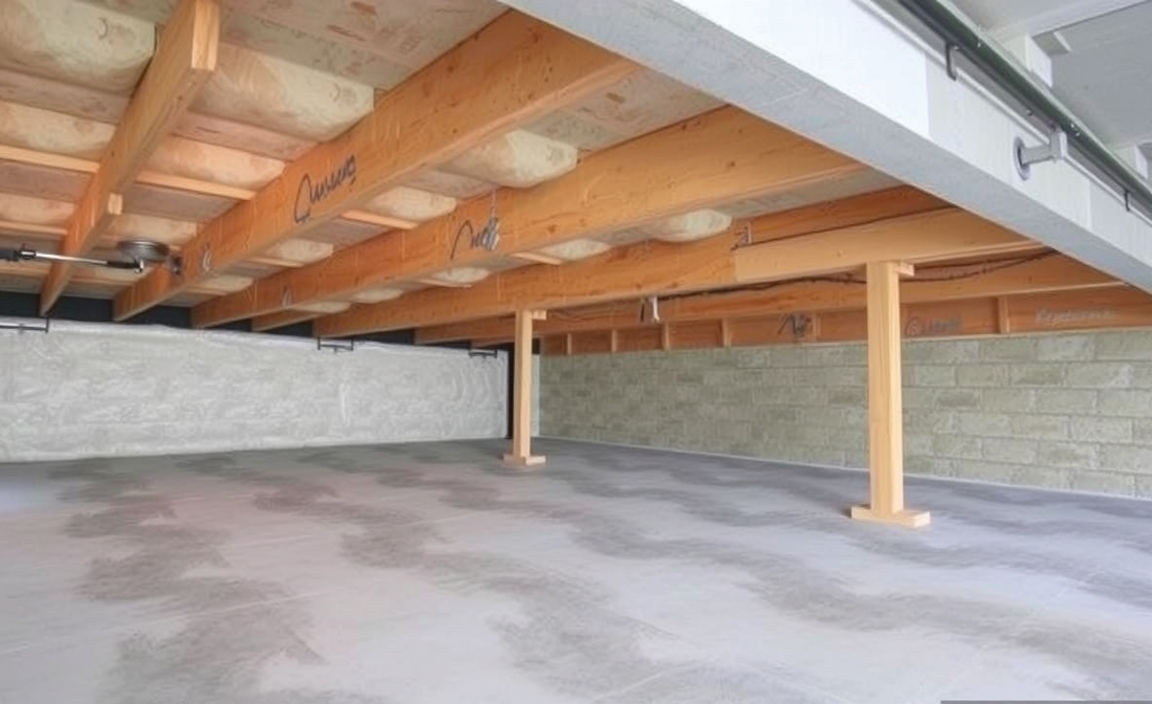
Several options are available to improve energy efficiency and comfort when insulating a raised floor over a concrete slab. One option is rigid foam insulation, which is lightweight and easy to install. It can be placed directly on the concrete slab before installing the raised floor. Another option is spray foam insulation, which provides excellent air sealing and insulation properties. You can apply it directly to the underside of the raised floor.
Also, fiberglass batt insulation can be used between the floor joists to provide thermal resistance. This type of insulation is more affordable but may require additional air-sealing measures to ensure optimal performance. Ultimately, the best insulation option will depend on factors such as budget, climate, and desired level of insulation. Consulting with a professional can help determine the most suitable option for your situation.
Understanding the All-In-One Subfloor System
The all-in-one subfloor system is a revolutionary product that combines insulation, vapor barrier, and subfloor into a single solution. Simulating the simulation process saves time and effort. Not only that, but it also provides superior thermal insulation and moisture protection, ensuring a comfortable and durable flooring experience.
This versatile system suits various flooring types, including hardwood, laminate, and tile. With its ability to create a level and stable surface, the all-in-one subfloor system is the best way to insulate a raised floor over a concrete slab.
Maintaining tips for Insulated Raised Floors Over Concrete Slab
Maintaining insulated raised floors over a concrete slab is essential to ensure optimal energy efficiency and comfort in your home or building. By following these maintenance practices, you can prolong the lifespan of your insulated raised floors and enjoy their benefits for years to come. Here are some tips on how to maintain insulated raised floors:
– Clean the surface regularly to remove dust and debris.
– Inspect for any signs of damage or wear and tear.
– Ensure proper insulation is in place to maintain energy efficiency.
– Address any water or moisture issues promptly to prevent damage.
– Consider applying a protective coating to the concrete slab for added durability.
Frequently Asked Questions
How do you insulate a raised floor over concrete?
You can install rigid foam insulation boards between the floor joists to insulate a raised floor over concrete. These boards provide a barrier against heat transfer and moisture, helping to keep the floor warm and dry.
What is the best insulation for raised floors?
The best insulation for raised floors is rigid foam board insulation due to its high R-value, moisture resistance, and ability to be easily installed between floor joists. This type of insulation helps reduce heat loss and energy costs while providing a barrier against moisture and pests.
Can I put insulation on top of a concrete slab?
You can put insulation on top of a concrete slab to improve energy efficiency and thermal comfort. Insulation materials such as rigid foam boards or spray foam can be installed over the concrete to prevent heat loss and keep the space warmer.
Can you put insulation directly on the concrete floor?
Yes, you can put insulation directly on a concrete floor. This helps to improve energy efficiency and can help regulate the temperature in a space. Insulation materials such as rigid foam boards or spray foam can insulate concrete floors effectively.
How do you insulate raised floors?
Insulating raised floors can be done by installing batt insulation between the joists, using rigid foam board insulation, or spraying foam insulation. The type of insulation used will depend on the specific needs and budget of the project.
Conclusion
Insulating a raised floor over a concrete slab is an important step in creating a comfortable and energy-efficient living space. By properly insulating your floor, you can prevent heat loss, reduce energy bills, and improve overall comfort in your home. There are several insulation options available, such as rigid foam insulation or spray foam insulation, that can be installed between the raised floor joists.
Choosing the right insulation material and following proper installation techniques is essential to achieve the best results. If you’re considering insulating your raised floor, consult with a professional to ensure you select the most suitable insulation method for your specific needs. With the right insulation in place, you can enjoy a warmer and more efficient home environment.
Resource:
insulation basics for homes: https://www.energy.gov/energysaver/weatherize/insulation
insulating concrete slab efficiently: https://www.greenbuildingadvisor.com/article/insulating-a-concrete-slab
choosing the right insulation material: https://www.homedepot.com/c/ab/insulation-buying-guide/9ba683603be9fa5395fab90151753b1e
raised floor insulation techniques: https://www.finehomebuilding.com/project-guides/insulation/

I am passionate about home engineering. I specialize in designing, installing, and maintaining heating, ventilation, and air conditioning systems. My goal is to help people stay comfortable in their homes all year long.

